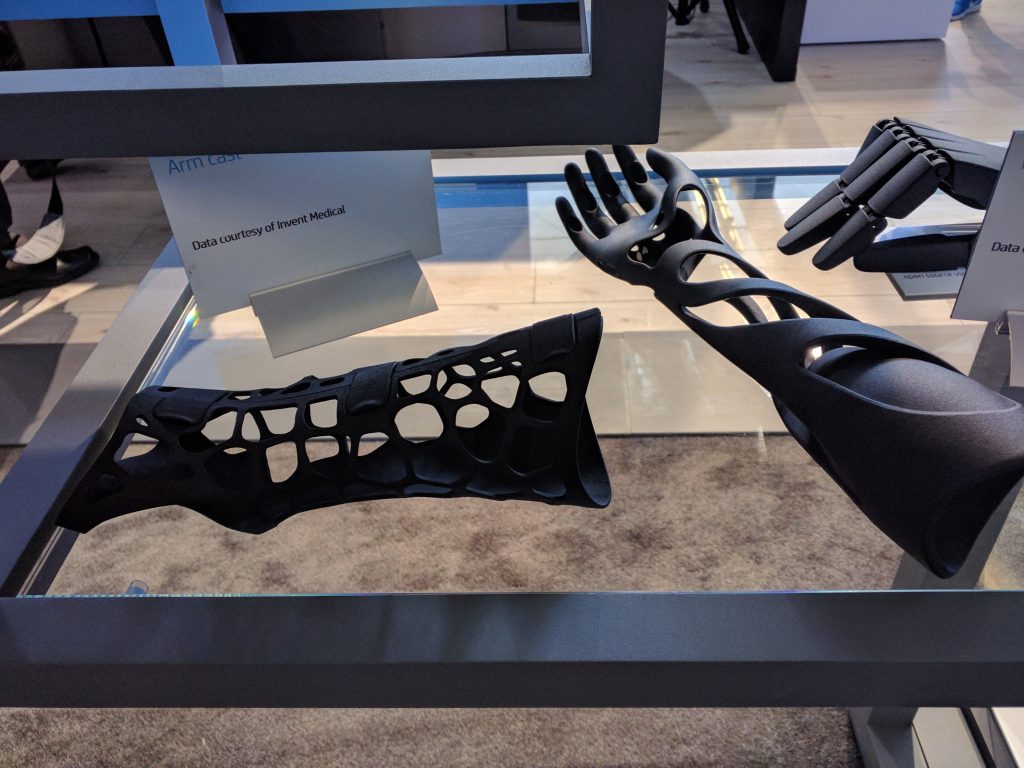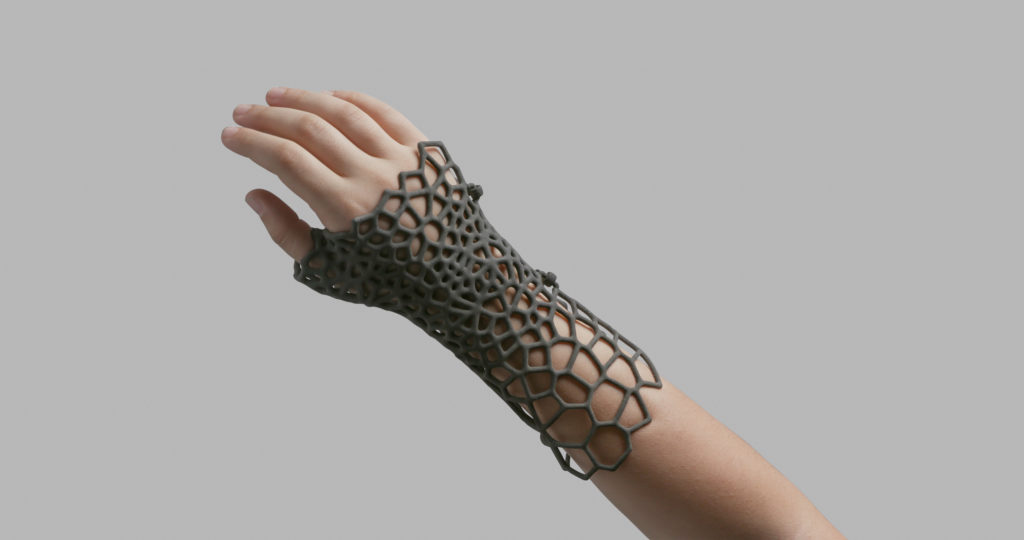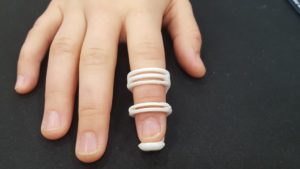If there’s one constant throughout my career in both 2D and 3D printing, it’s that the key to growth lies in the ability to uncover and exploit “killer applications.” Nowadays people tend to think of software when they hear that term. They’re so used to thinking about apps on their phones and other devices. For them, a killer app is one that has a billion or more downloads.
But killer applications exist with many different technologies. For example the connected home seems like it will be one of the killer applications for the Internet of Things. People are buying all kinds of devices, from smart kitchen appliances to voice activated speakers and video doorbells, all in an effort to improve life in and around their living space.

While 3D printing is a 30+ year old business, the technology is just now becoming good enough, fast enough and cheap enough for killer applications to percolate. Most people in the industry believe those will evolve in key markets like automotive, aerospace and consumer products, among others. They certainly are moving in that direction, but arguably the industry with the fastest acceleration thus far is medical devices.
There’s plenty of examples out there. The hearing aid industry migrated entirely to additive manufacturing in less than 500 days. If you’re in that business now, parts of your product are most likely 3D printed. Invisible teeth aligners are another example. A scan is taken at the beginning of treatment and an algorithm determines each progression. Molds are then manufactured and the clear plastic aligners are formed around them. Often it can require a dozen or more stages to completely straighten a person’s teeth. With that much customization it’s hard to imagine the product could even exist without 3D scanning and printing technology.
Another application that seems to be booming is the manufacture of custom orthotics and prosthetics. Like hearing aids and invisible aligners, the ability to scan and print based on unique physical requirements creates a competitive advantage that other production methods can’t match. Digital technologies enable mass customization.
But it’s not only a matter of producing a better product. The environmental impact can also be profound.
”iOrthotics produces custom orthotics for the medical industry,” says Founder and General Manager, Dean Hartley. “Subtractive manufacturing is the ‘old school’ method. When orthotics are made that way, approximately 1.4 kilograms of material goes in the waste bin. With additive manufacturing, the parts comes out completely finished, saving a lot of time and skilled labor. But waste is the biggest component. With 3D printing we only have about 30 or 40 grams of waste per pair. In a facility where you’re making 10,000 pairs of orthotics per year, using the traditional method you’d be throwing about 15 tons of wasted plastic into a landfill yearly. With additive, we essentially save all that waste.”
Market Size Matters
In each of those examples, one of the big reasons for success is the size of the market. Approximately 48 million Americans have some degree of hearing loss. That number only increases as our population ages. Another 30 million have dental issues that are severe enough to require some degree of orthodontic intervention. Over the past 50 years having braces have become so common that it’s now estimated that 50% of children end up wearing them before reaching adulthood. The orthotics and prosthetics industry is also far from small, estimated at $8 billion in annual revenue.

Life Enabled’s Prosthetics Being Fit.
But there are other areas of medicine that are ripe for digital disruption. Consider the market for casts and splints. It’s estimated that in the U.S. alone, 6 million people suffer a fracture each year. Other research puts the numbers much higher suggesting that hospitals, emergency rooms and physicians offices actually treat more like 20 to 30 million fractures annually. Of those, more than half are of the upper extremities, including the upper arm, forearm, wrist and fingers. Lower limb fractures including hip, upper leg, lower leg, ankle, foot and toes are reported in slightly lower numbers.
Of the totals, it’s possible that upper arm, lower arm and wrist fractures (which usually require a splint, cast, or both) happen 10 million times per year. With lower extremities, let’s assume the addressable part of the market (upper leg, lower leg, ankle and foot) happens another 5 million times per year. If so, the total market size is maybe 15 million units annually. If all of that is true, then the market could be worth $3.5 billion or more.
How Casts Are Made Now
There are basically two ways casts are made today. Both involve wrapping the body part in a sleeve and a padded middle payer. Then either plaster or fiberglass is wrapped around, forming an exterior layer. While the materials are cheap and easy to acquire, the traditional approach offers several downsides. In fact, anyone who’s ever had to wear a traditional cast will tell you how much they suck.
Both options are bulky and add significant weight for the wearer, although fiberglass is definitely the lighter of the two options. Neither option is water resistant, making bathing difficult. They also aren’t breathable, so they end up being itchy, stuffy and smelly. The plaster versions can also be difficult to x-ray, creating instances where the cast must be removed and reapplied.
Who Makes It?
In most cases a cast isn’t made by a doctor or nurse. An orthopedic cast technician is the person who actually immobilizes a broken bone by straightening the limb and setting it in a cast, typically under the direction of a doctor or surgeon. The technician also removes the cast once the surgeon has determined the bone has healed completely.
Often hospitals and other medical facilities have a dedicated lab where casts are made and removed.
How Could the Industry be Disrupted?
With the prevalence of digital imaging technology, it’s not that difficult or expensive to get a three dimensional image of the affected area. Just like with invisible aligners or orthotics, once the image is processed it can be used to manufacture a product that’s made specifically for the user.

Advancements in 3D printing make it possible to create a lightweight, plastic cast that provide a better fit with fewer downsides. First, because they mimic the scan they can be more anatomically accurate. But also because they can be made from nylon (or other durable plastics) they can be tough and strong enough to handle the rigors of daily life. They’re also waterproof and more hygenic. They can even be designed with a lattice type structure to reduce weight and greatly enhance breathability, creating a much more comfortable experience for the patient.
Barriers to Entry
One might think speed is the primary barrier to entry. After all, a plaster or fiberglass cast can be made on the spot, with little need for complex machinery or tooling. But that’s not always a challenge. Often, especially after surgery, a patient will be fitted with a splint for anywhere from 24 hours to a week, to allow swelling and other post-operative issues to subside. Whether it’s manufactured onsite or elsewhere, there’s typically time.
Cost is certainly a challenge. While 3D printing has gotten much cheaper in recent years, its difficult to compete with the cost of labor and raw materials involved with traditional casts. Orthopedic technicians make anywhere between $30 to $65,000 and the average cast takes 20 to 45 minutes to fit. In the case of either plaster or fiberglass, material costs are negligible.
Yet still, the average cost of a cast (excluding physician fees) is estimated at somewhere between $225 and $250. At some point 3D printing becomes just as affordable.
The Who and the Where
Like every killer application, it seems the bigger questions are, “who produces the product, and where?” In the orthotics business, companies like iOrthotics have landed on a model where they manufacture from a central facility and then deliver to podiatrists and clinics who resell their products. In the dental field, NivellMedical is following a similar approach towards selling and distributing invisible aligners.
Could the same strategy be used with casts and splints? At least one company thinks so. ActivArmor has developed a process where a scan is taken by one of their orthopedic clinical partners, creating a 3D model of the patient’s limb. They then use it to create a completely individualized and fitted splint based on the physician’s specific positioning and instructions. The ActivArmor™ device is then custom fabricated for the patient and shipped back to the clinic for installation and fitment.
Outsourcing Has Its Advantages
Of course this strategy makes a lot of sense for health care providers who don’t want to invest in the capital equipment and expertise it takes to produce custom casts and splints in house. For dedicated service providers, making these types of products is their core competency. Through decades of experience they’ve learned to optimize their operations and produce the best possible products. They invest in the people, processes and technology needed to manufacture high quality products as efficiently and inexpensively as possible.
But, as I’ve mentioned more than a few times in the past, any time customization is involved, friction is inevitable. Customers have to spend more time trying to articulate their needs and preferences.
Workflow is Key
In any environment where products are personalized a digital workflow is critical. You must give customers the ability to communicate their needs and submit all the information necessary to successfully complete each job. But in the medical industry it takes more than a slick front-end. Data must be locked down to protect patient confidentiality and meet other industry regulations. For this reason, service bureaus selling into that market need to work with software providers who can ensure the security of their processes and data.
Artificial Intelligence
Beyond quoting, order entry and job management, the company that successfully disrupts this market will also need robust software to convert a patient’s digital scan into a fully optimized plastic cast that can be additively manufactured as quickly and inexpensively as possible. I’ve been saying for years that the combination of multiple emerging “platform” technologies could create a lot of interesting new business opportunities. In this example, artificial intelligence and 3D printing could be combined to do a lot of the heavy lifting.
Just Do It
But the good news is, companies are already doing it in plenty of related fields. Whether we’re talking hearing aids, invisible braces, or prosthetics, companies have built business models to that allow them to receive 3D scans and convert them into unique physical products. In some cases they’re fully automated. In others there’s someone behind the curtain pulling levers each time an order is placed. But even if they’re relying on labor today they know they must replace it with technology tomorrow. One is scalable, the other is not.
While splints and casts have the potential to become a “killer application” for 3D printing in the medical industry, they’re certainly not alone in that market or others. For existing companies and startups, the challenge is to find a need and better solve it. Those who do have the potential to own a niche. Those who wait for an application to be developed have little choice but to commoditize it. In a complex environment, that’s too often difficult to achieve and sustain.
John Hauer is the Founder and CEO of Get3DSmart, a consulting practice which helps companies understand and capitalize on BIG opportunities with 3D printing.
John’s original content has been featured on Forbes, TechCrunch, Futurism, QZ.com, and 3DPrint.com among others. Follow him on Twitter at @Get3DJohn
Subscribe to Our Email Newsletter
Stay up-to-date on all the latest news from the 3D printing industry and receive information and offers from third party vendors.
Print Services
Upload your 3D Models and get them printed quickly and efficiently.
You May Also Like
Consolidation in AM: How 2025 Is Shaping the Industry’s New Normal
The first half of 2025 has been marked by a clear shift in the additive manufacturing (AM) industry. Companies are no longer just focused on developing new tech by themselves....
Etsy Design Rule Change Reduces Selection of 3D Printed Goods
Online marketplace Etsy has implemented a rule change requiring all 3D printed goods on the site to be original designs. The update to the site’s Creativity Standards states, ¨Items produced using...
U.S. Congress Calls Out 3D Printing in Proposal for Commercial Reserve Manufacturing Network
Last week, the U.S. House of Representatives’ Appropriations Committee moved the FY 2026 defense bill forward to the House floor. Included in the legislation is a $131 million proposal for...
Transforming From Tourist to Native: Duro CEO Michael Corr Explains Why the Company Rebuilt its PLM Software on AI
In these early innings of the AI boom, many market analysts have expressed concern that AI spend has gotten too far ahead of the technology’s proven ability to deliver significant...

































